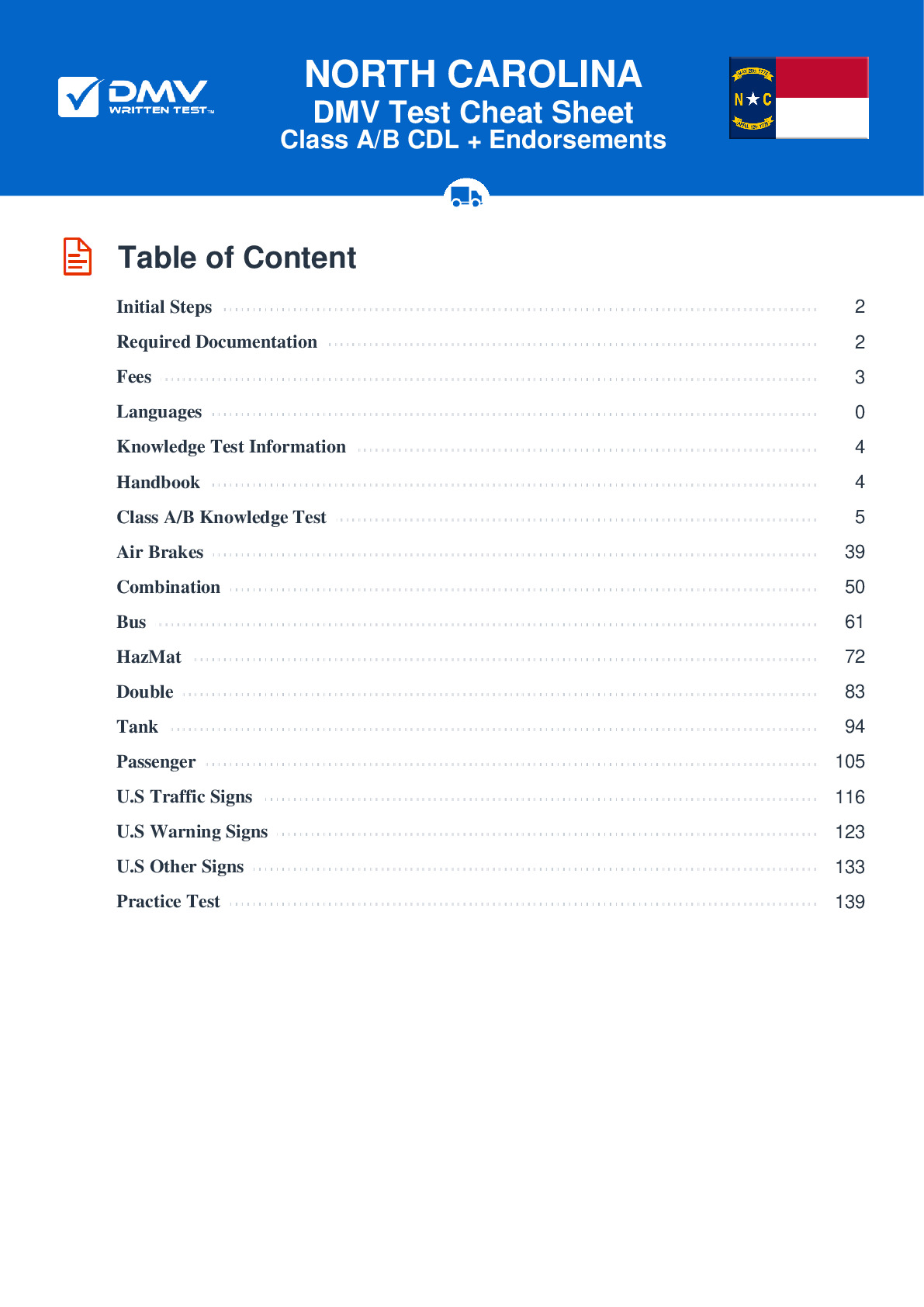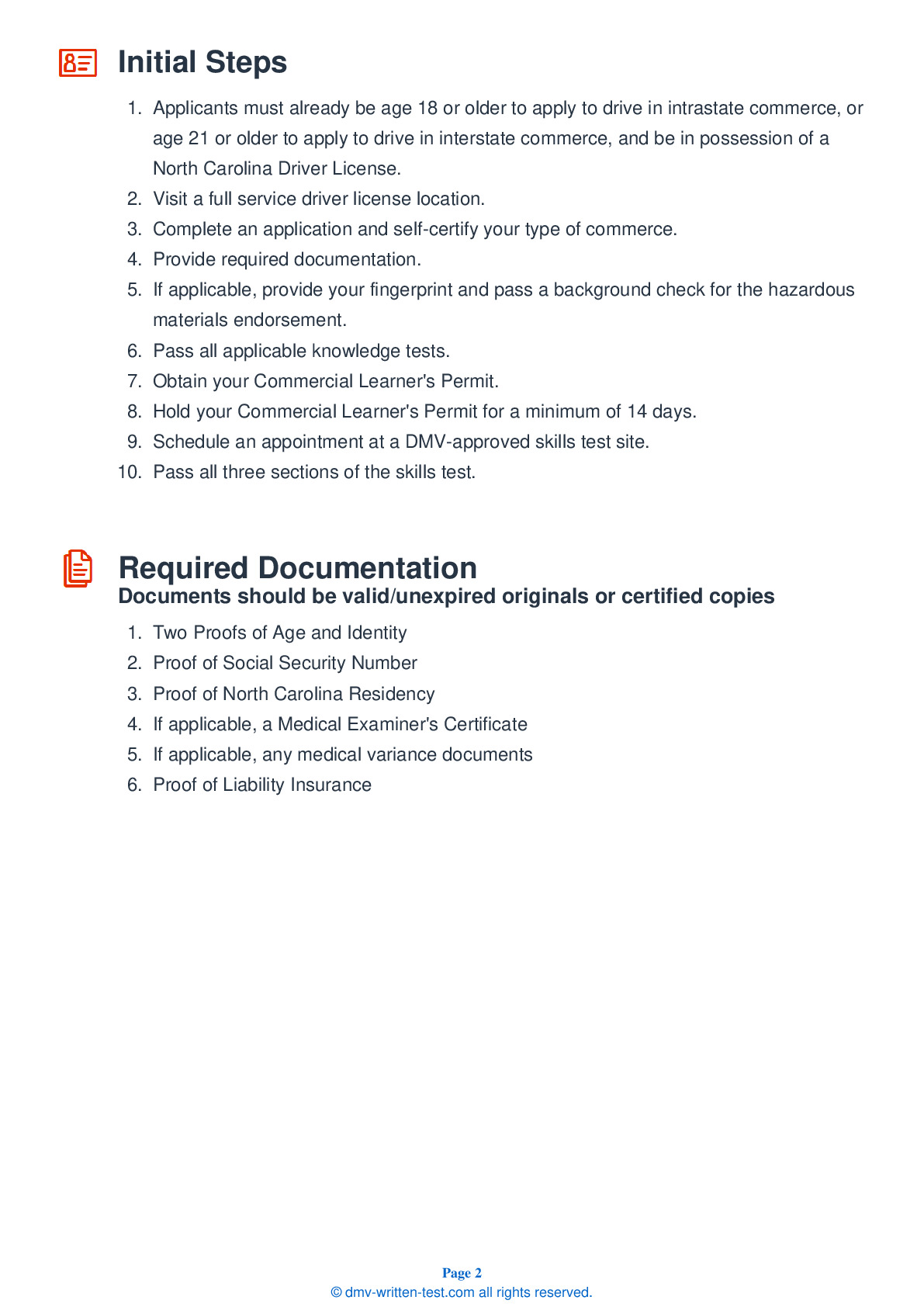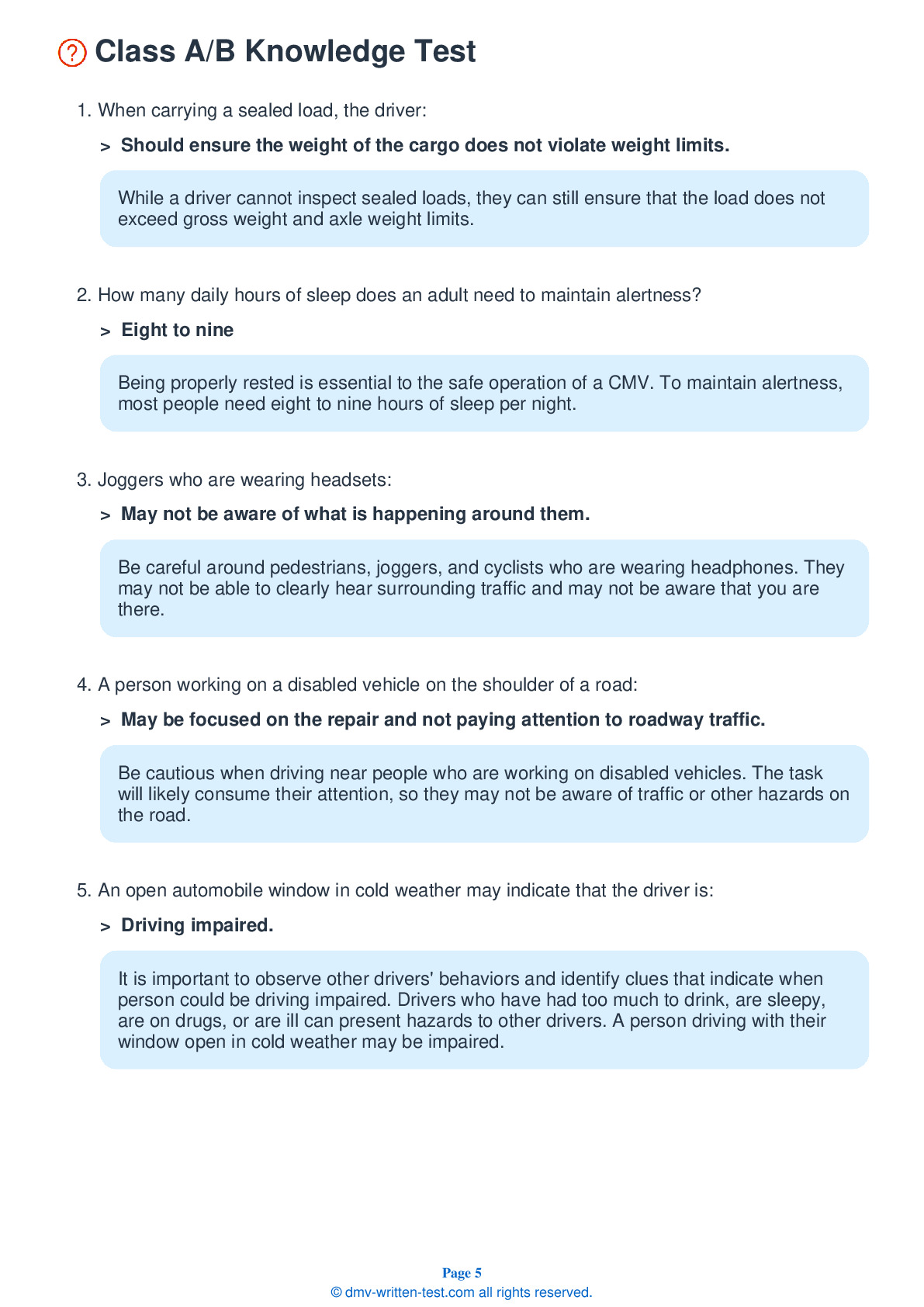Air Brakes
This endorsement is required for driving a vehicle with air brakes. To receive this endorsement, applicants must pass a written test. The test consists of 25 multiple choice questions. Each question has three or four answer choices. To pass, the applicant must answer at least 20 questions correctly. Test questions come from the North Carolina Commercial Driver License Manual. Questions come from the chapter covering: Air Brakes. The Air Brakes endorsement may be used with the Class A, B or C CDL.
Number of Question
Passing Score
1. If you are braking on dry pavement while traveling at 55 mph, how much distance will brake lag add to your overall stopping distance?
Explanation
The total stopping distance for vehicles equipped with air brakes is made up of four factors: perception distance, reaction distance, brake lag distance, and braking distance. When braking at a speed of 55 mph while driving on dry pavement, the brake lag can add around 32 feet to the vehicle's total stopping distance.
2. If an air compressor is belt-driven, the belt should be routinely checked to ensure that it is:
Explanation
If your vehicle has air brakes, the air compressor drive belt should be checked before each drive. Check the tightness of the belt and verify that it is in good condition.
3. If the low pressure warning signal activates while you are driving, you should:
Explanation
If the low pressure warning signal activates while you are driving, it is important that you safely exit the roadway as soon as possible and park your vehicle. If the air pressure gets too low, the brakes will no longer work well enough for you to stop safely.
4. The most common type of foundation brake used is the:
Explanation
The most common type of foundation brake is an s-cam drum brake.
5. To confirm that a trailer has ABS, you can:
Explanation
If you are unsure if a trailer is equipped with an Anti-Lock Braking System (ABS), look under the vehicle for the electronic control unit and wheel speed sensor wires coming from the back of the brakes.
6. An air compressor governor controls:
Explanation




